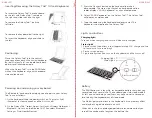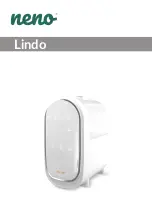
9
WARNING: NEVER OPERATE THE MOWER WITH THE DISCHARGE DEFLECTOR IN THE
RAISED POSIT/ON.
For the best lawn appearance, do not mow when the grass is wet or heavy with dew. Wet grass could
plug the discharge area of the mower creating an unnatural load through the blades and spindles
possibly damaging the mower deck belt. Wet grass will also leave unsightly dumps on the lawn.
If the mower should become clogged, back the unit out of the uncut grass. If the mower will not clear
itself, raise the deck to the maintenance position (see page 12 for procedure), shut off the engine, set
the parking brake and clean the bottom of the deck with a scraper.
WARNING: THE OPERATOR SHOULD NEVER LEAVE THE TRACTOR SEAT WITH THE
MOWER BLADES ROTATING, WITH THE TRACTOR IN MOTION OR WHEN THE TRACTOR
ENGINE IS RUNNING.
In medium and heavy cutting conditions, mow so the discharged clippings will be AWAY from uncut
grass. In light cutting, discharged clippings can be directed onto the uncut grass allowing them to be
recut finer, leaving the lawn almost free of unsightly clippings.
ADJUSTING THE WEIGHT TRANSFER VALVE
The Weight Transfer Valve is used to transfer the mower weight to the tractor to reduce the possibility
of turf gouging and scalping.
Adjustment of the weight transfer valve should be accomplished as follows:
1. With the tractor engine running at rated
RPM, push the hydraulic control forward into
the float position.
2. Turn the Weight Transfer Valve knob (1)
clockwise until the mower lifts off of the ground.
3. Turn the knob (1) counterclockwise slowly
until the mower front gauge wheels touch the
ground. Turn the knob (1) another 1/4 turn
counterclockwise.
4. Operate the mower on uneven terrain at a
desired ground travel speed and observe the
front gauge wheels. The Gauge wheels should
be following the contour of the ground.
If not,
5. Turn the knob (1) counterclockwise 1/4 turn
at a time until the gauge wheels follow the
grounds contour.
Содержание MC60RD
Страница 30: ...29 SAFETY DECALS SAFETY DECAL LOCATIONS...











































